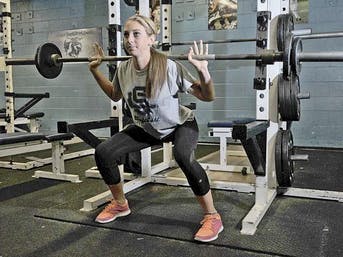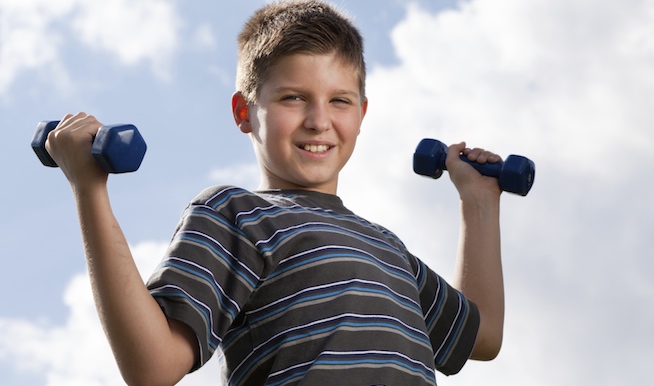Previously, the safety of strength training and its role in reducing youth athletic injuries was discussed. We now turn our attention to the role of resistance training to optimize performance in young athletes. Muscle strength and power are essential for maximizing sports performance in any young athlete. This article reveals how strength training also improves sports performance.
Muscular strength is the maximum force exerted during a given movement. Power is the product of force and velocity. Power refers to the speed that which strength is expressed. Strength and power will be improved with a properly designed, supervised, and progressed resistance training program.
When to Start Youth Strength Training
 Children as young as 10 years old achieve substantial performance improvements through properly supervised and progressed strength training programs.
Children as young as 10 years old achieve substantial performance improvements through properly supervised and progressed strength training programs.
A 2014 study in the Journal of Strength & Conditioning Research showed young children engaged in strength training significantly improved vertical jump, long jump, balance, speed, agility, strength, and power. Resistance training with weights combined with plyometrics results in superior performance gains compared to resistance training alone.
With young athletes always emphasize the correct performance of each exercise with proper movement patterns. The amount of weight lifted is much less important. Pre-adolescent athletes show substantial improvements in strength and power due to neurological adaptations. However, large changes in muscle mass or body composition do not occur until puberty.
Priming the Athlete to Flourish in Adolescence
Peak height velocity, or a child’s “growth spurt”, marks the point in maturation where hormones (i.e., testosterone in boys) rise exponentially. During this period many physiological changes occur. In boys, this is the point where muscle mass spikes and young athletes begin to make improvements in muscular strength and power.
A 2016 systematic review in the Journal of Sports Sciences, showed boys’ adaptations to resistance training are greatest during and following their peak height velocity. Ideally, these athletes have already developed the foundational movement pattern competencies during childhood.
During peak height velocity, increasing training volume and intensity results in profound improvements in strength, power, and performance. Athletes without prior resistance training experience, or those who have not mastered fundamental movement patterns, are at a disadvantage compared to athletes who begin training earlier.
How Much and What Type of Exercises are Best?
Research shows a dose-response relationship between strength training and performance in young athletes. In order to maximize power and strength, high school athletes should train at relatively high intensities, 2 to 4 times per week, with multiple sets per exercise, 6 to 8 repetitions per set, and with long rest periods between sets (3 to 4 minutes).
High school athletes should incorporate Olympic lifts (clean, snatch) in order to maximize power development. A 2008 study in the Journal of Strength & Conditioning Research showed Olympic lifts resulted in superior improvements in vertical jump compared to training with traditional power lifts (squat, deadlift, and bench press).
The Bottom Line About Youth Strength Training
The underlying key to success with any youth strength training program is related to supervision and progression by a qualified professional. Safety and performance gains are only achieved when young athletes have been coached appropriately. When implemented correctly, strength training will positively alter the trajectory of any young athlete’s athletic career or life.
If your young athlete is unsure about how to get started, call the physical therapists at BSR. We will help you develop a safe and effective program.

